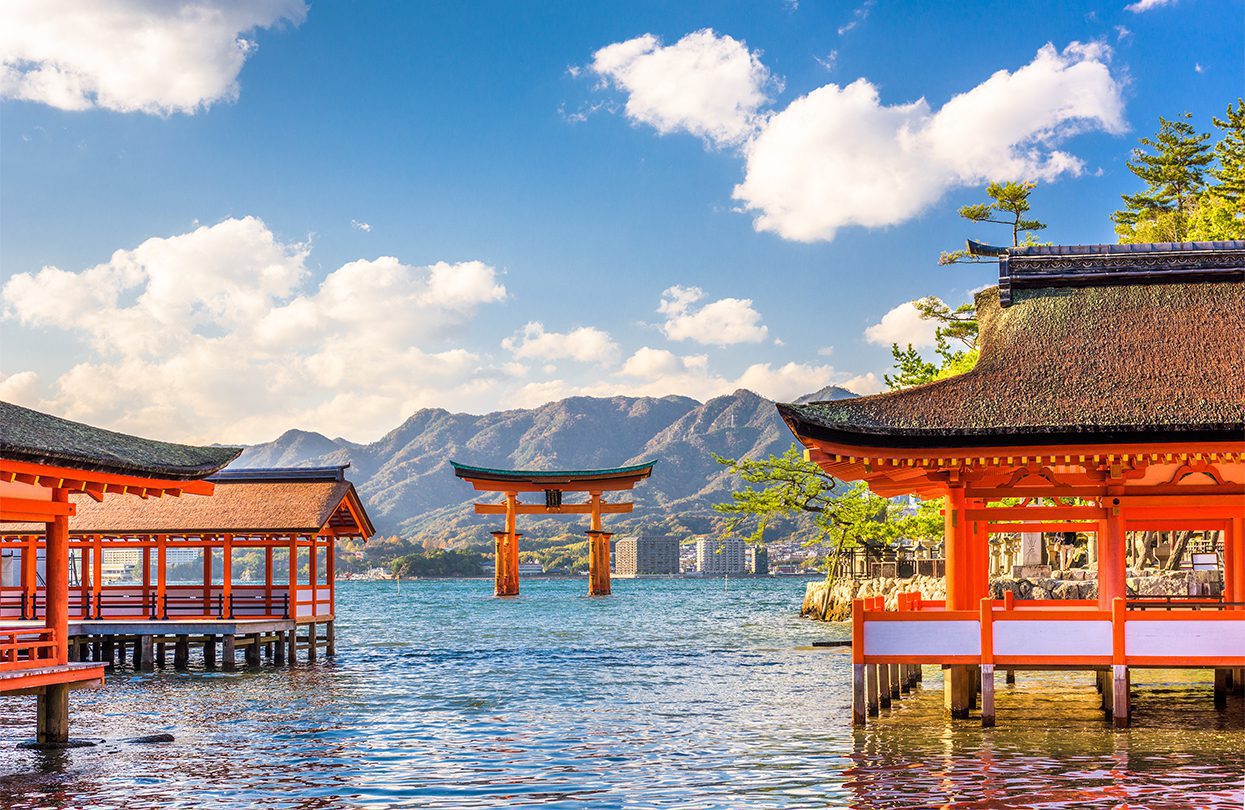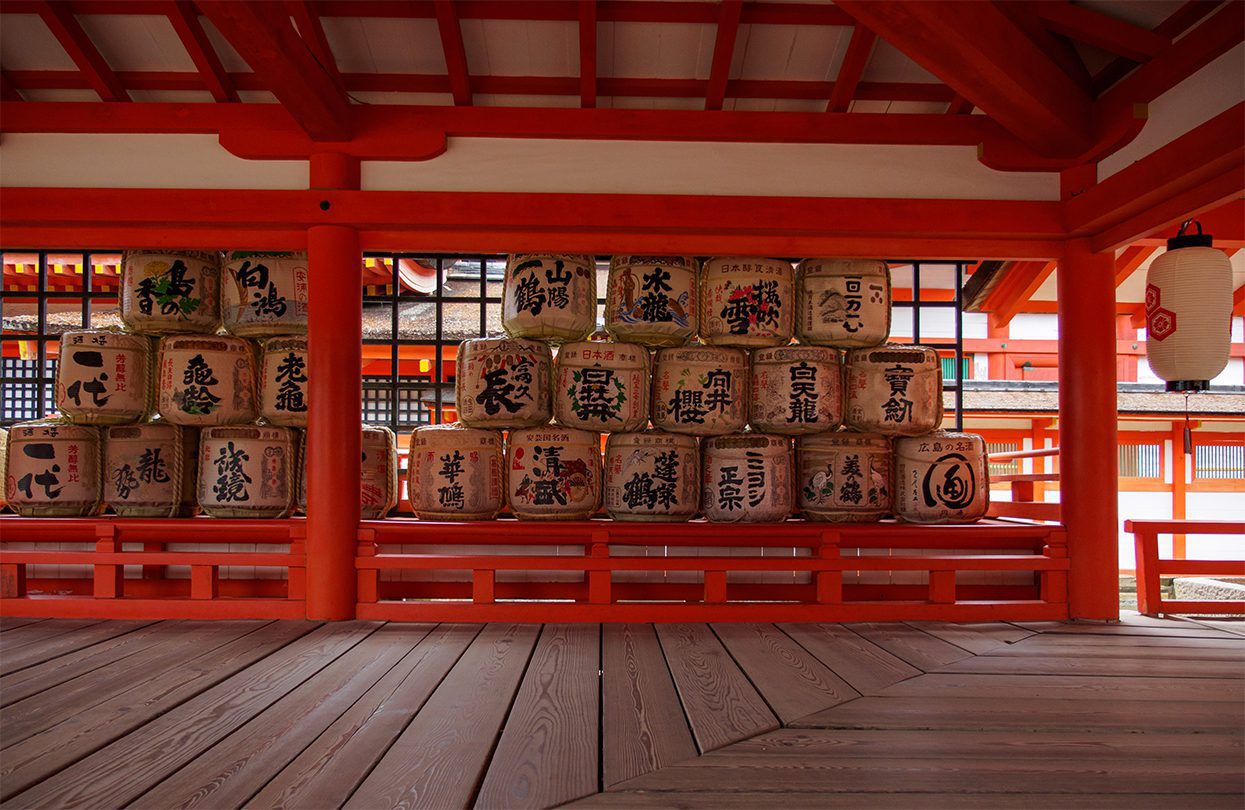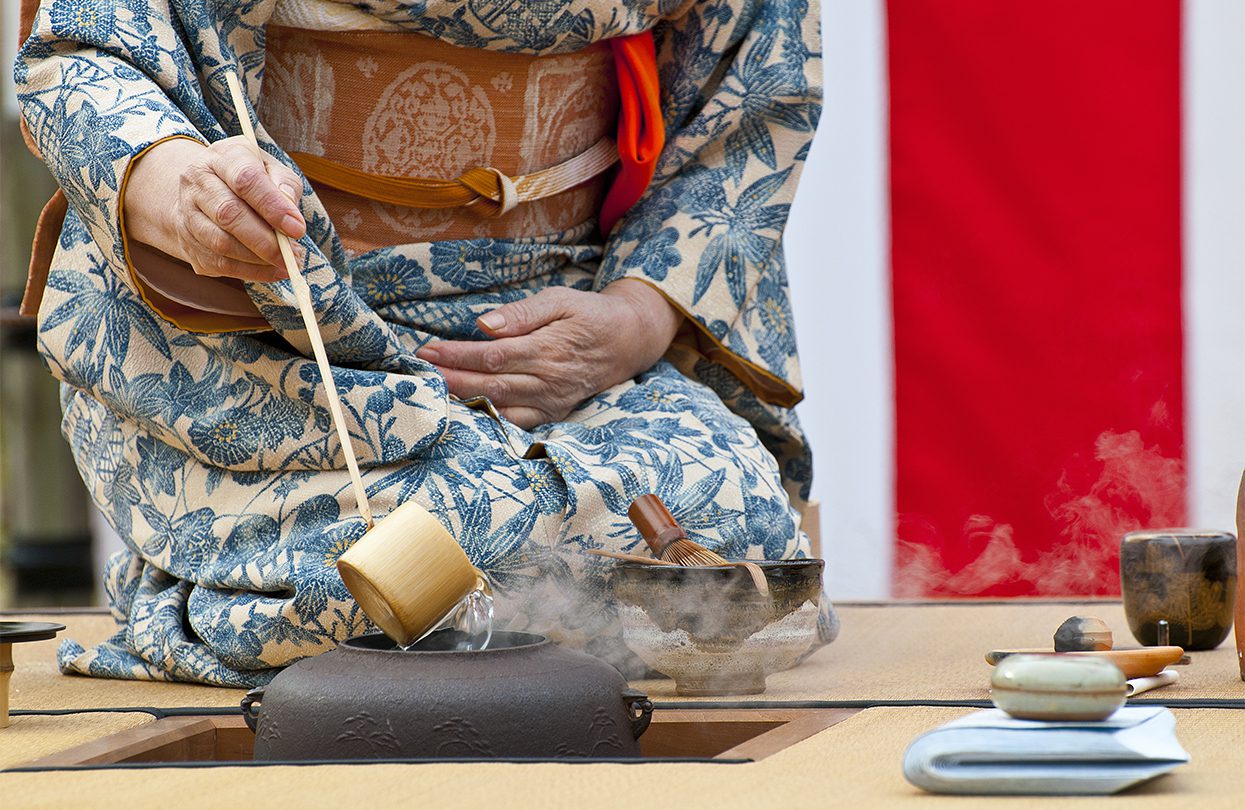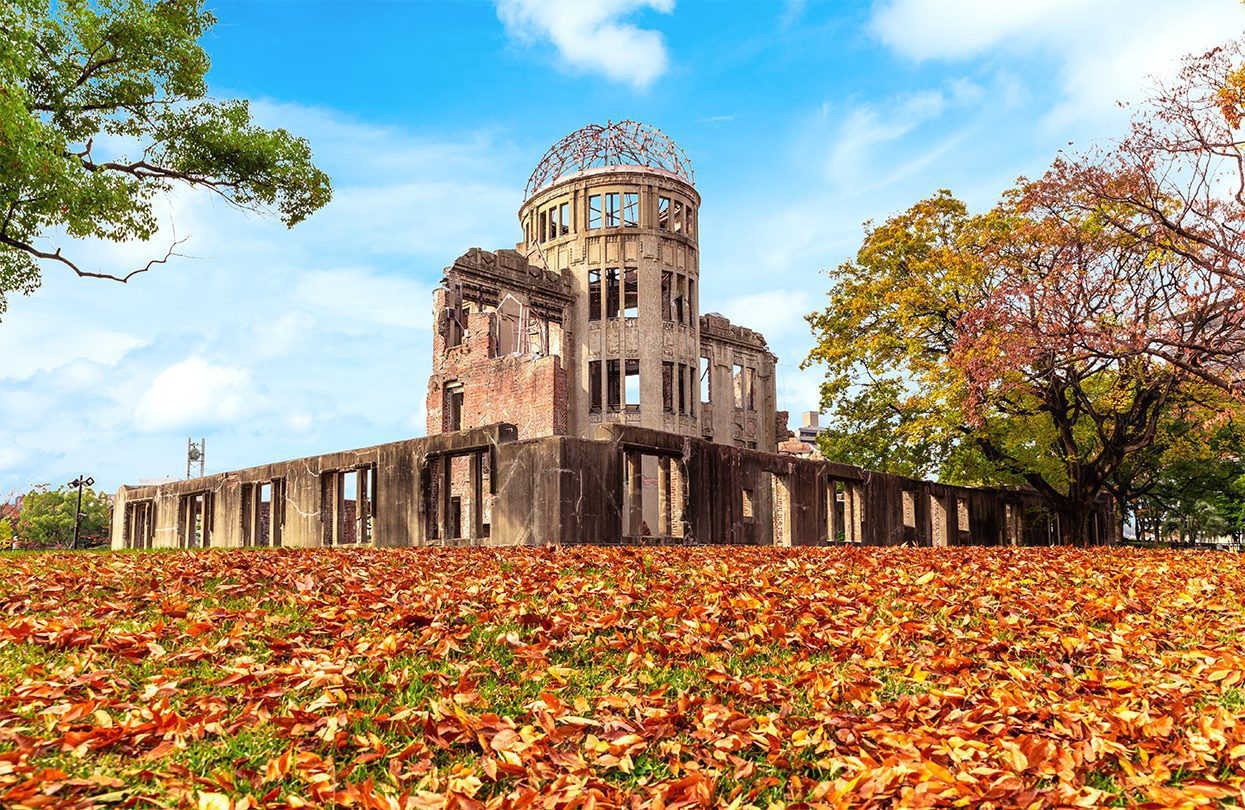[vc_row][vc_column][vc_column_text]A formerly devastated city managed to pick up its pieces in a way that’s beyond admirable. Right now, Hiroshima is one of the main cultural hotspots on Japan’s largest island Honshu.
Hiroshima might never fully recover from the lethal blade that stabbed the city’s heart on August 6, 1945, when the first atomic bomb was dropped on a once prosperous and artsy municipality. Pre-bombed Hiroshima was stylish, with a humming downtown area and Hondori, known for its enchanting lily-of-the-valley street lanterns, wiped out in an instant when Enola Gay dropped the bomb and it ignited in a pulverising shockwave of light and heat brought on by the A-bomb blast.
The unhealed scar and shattered dreams of countless souls who lost their lives in the blast is memorialized in the Hiroshima Peace Memorial Museum. Macabre images, dark halls, and agonising stories show the brutal hell Hiroshima’s people suffered in the aftermath. The city has picked itself up and has blossomed over time in the wake of such brutality, leaving hardly any visible proof of the past horror. Still, the museum is an incredible setting to begin to understand modern Hiroshima, its culture and its citizens.
Outside the museum, stroll on the shores of the river to witness the A-Bomb Dome; once a prestigious exhibition hall, now a frightening concrete carcass, left as a symbol of mass-destruction.[/vc_column_text][/vc_column][/vc_row][vc_row][vc_column][vc_column_text]

Hiroshima Peace Memorial Park by f11photo
[/vc_column_text][/vc_column][/vc_row][vc_row][vc_column][vc_column_text]
Sake breweries – Hiroshima’s monumental beverage
Tram carriages hum, shopping districts pop up like fresh flowers and the bars close their doors at dusk. Involuntarily modern, Hiroshima is an old, ripe soul. The identity of the coastal city is partially defined by sake, an authentic alcoholic rice brew, and the drink of choice. Hiroshima is one of the significant sake producers in Japan, and Saijo district in Hiroshima Prefecture is the epicentre of this iconic beverage. Submerge yourself in the brewery culture during a private tour in Saijo’s Sakagura-Dori, which translates into ‘Sake Brewery Street’. On the tour, the guide goes through the brewing process, from collecting the rice to the water type that’s needed for brewing. Sample the smooth Hiroshima sake; fragrant, soothing, surprisingly light, but ultimately enjoyable in taste. Paired with a traditional Japanese meal, tea and dessert, this culinary journey will be one you want to write home about.[/vc_column_text][/vc_column][/vc_row][vc_row][vc_column][vc_column_text]

The Itsukushima Shrine & its torii gate on Miyajima Island by by Sean Pavone
[/vc_column_text][/vc_column][/vc_row][vc_row][vc_column][vc_column_text]
Stay in style – Relaxation in a ryokan
Japanese culture is a celebration of order and comfort, which is best exhibited in ryokans; traditional timber guesthouses, decorated with an everlasting love for details, simplicity, and warm contentment. Miyajima Island, part of Hiroshima Prefecture and home to the epochal Itsukushima Shrine, boasts a ryokan where the level of relaxation is at an all-time high. Iwaso has uniquely designed rooms with wooden floors, pacifying fauteuils, and sights of the lush greenery surrounding the complex. From the large windows, the concert of birds and the wind playing games in the treetops, are the only tones from the outside world that infiltrate Iwaso. Exquisite authentic Japanese meals prepared exclusively with prime ingredients pop with colours on the low dining table in the centre of the room. Iwaso caters as a grand getaway, however unadorned, in an environment that catches the eye with beautiful simplicity.[/vc_column_text][/vc_column][/vc_row][vc_row][vc_column][vc_column_text]

View of multiple Sake barrel offerings by SubstanceTproductions
[/vc_column_text][/vc_column][/vc_row][vc_row][vc_column][vc_column_text]Ryokans are often paired with an onsen, a natural hot spring channelled into an ultimately relaxing bath or pool. Drive northwest, through forests along farmlands, to the mountainous spine of southern Honshu. Suddenly, Yunoyama Onsenkan appears as a green camouflage, hugged by its natural surroundings. The lukewarm, weak-radioactive water runs down a natural tap in the open air. Despite being weak-radioactive, locals state that the water has healing properties and is commonly known to be safe to bathe in. A unique bathing style, standing under the gushing water, is a heavenly match with the heated indoor pool of this sheltered resort.[/vc_column_text][/vc_column][/vc_row][vc_row][vc_column][vc_column_text]

Japanese tea ceremony by KPG Payless
[/vc_column_text][/vc_column][/vc_row][vc_row][vc_column][vc_column_text]
A sweet break time – Indulge in a tea ceremony
Chado – the ‘Way of Tea’ – is far from drinking an ordinary cup of refreshment with relatives; it’s a philosophy, a lifestyle, and training of the mind for the disciples who perform this elegant ritual. Tessen, on the outskirts of Hiroshima proper, initiates the guest to the ancient tea customs of Japan. A Chado master prepares and serves the matcha green tea with tip-toeing, but secure steps during a private session in one of their beautiful chashitsu rooms. All aspects in the tea room breathe simplicity including the mats and the water jar, for a balance of the mind. Precision and tradition melt together during the tea’s preparation. Participants will be able to interact without distractions, for the tea ceremony is meant to connect people and pass on ancient traditions. After the tea service and accompanying sweets by the master, practice your new-found knowledge by preparing your very own signature brew.
Hiroshima tells the story of determination and resurrection of mythical proportions. Its DNA is more deep-rooted than the avant-garde skyline and rebuilt houses. Comforting delights and culinary treasures have found their way back into the heart of this flourishing culture. By Huub Lakerveld. ◼[/vc_column_text][vc_column_text]Subscribe to the latest edition now by clicking here.
© This article was first published in Aug-Sept 2019 edition of World Travel Magazine.[/vc_column_text][/vc_column][/vc_row]



